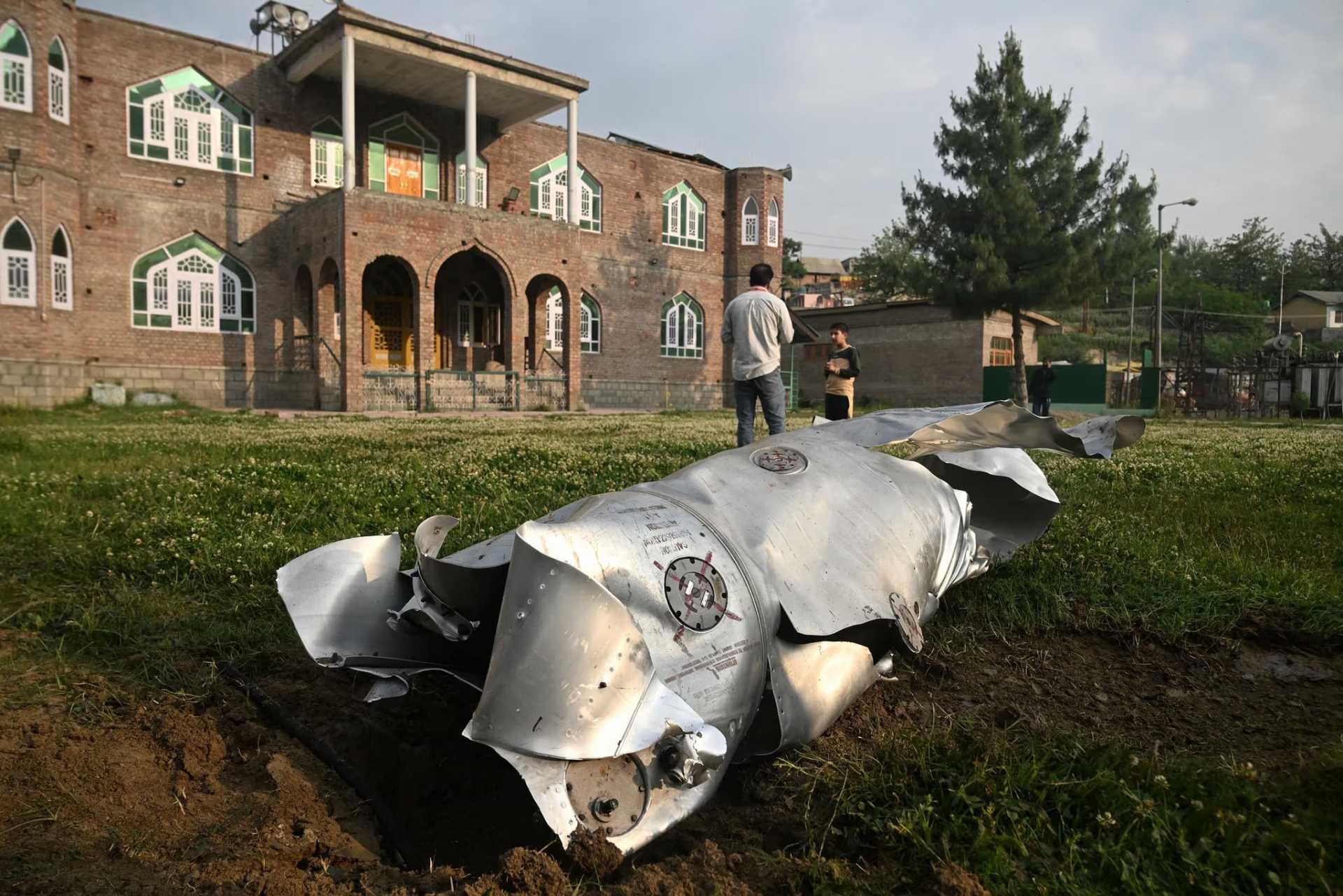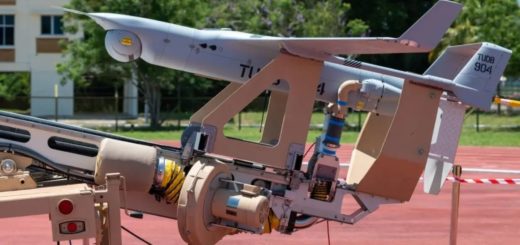Breaking News | Pakistan may have downed up to six fighter jets in what could be India’s heaviest air losses since 1971

{loadposition bannertop}
{loadposition sidebarpub}
On May 7, 2025, the Indian Air Force conducted a coordinated air operation designated “Operation Sindoor,” during which it struck nine locations situated in Pakistan and Pakistan-administered Kashmir. Indian authorities stated that the operation was launched in response to an attack that occurred in Pahalgam, Indian-administered Kashmir, in April 2025, which resulted in the deaths of 26 Indian tourists. According to Indian Foreign Secretary Vikram Misri, those responsible for the attack were allegedly trained and based in Pakistan and affiliated with the Resistance Front (TRF), a group which Indian officials associate with the Pakistan-based Lashkar-e-Taiba. Follow Army Recognition on Google News at this link
Pakistan’s military officials stated that they had shot down five Indian aircraft: three Dassault Rafale fighters, one Sukhoi Su-30MKI, and one Mikoyan MiG-29, as well as an Israeli-built IAI Heron reconnaissance drone. (Picture source: Twitter/Defence Pakistan)
Misri indicated that Indian intelligence agencies had detected activities by terrorist modules across the Line of Control and had identified indications of potential follow-on attacks. The operation was characterized by India as preemptive, proportionate, and aimed exclusively at what it classified as terrorist infrastructure. The airstrikes were conducted between 01:05 and 01:30 IST and were not, according to official Indian statements, directed at civilian or economic targets. Colonel Sofiya Qureshi and Wing Commander Vyomika Singh provided imagery of several of the sites following the strikes, which they stated demonstrated that the objectives had been struck. Indian authorities linked the need for the operation to the regional security environment and the impact of violence on tourism and economic stability in Jammu and Kashmir. The region reportedly received over 22.5 million visitors in the previous year, and Indian officials assessed that the Pahalgam attack was aimed at disrupting this pattern of increased civilian movement.
Pakistan responded swiftly, as the country’s military officials stated that they had shot down five Indian aircraft: three Dassault Rafale fighters, one Sukhoi Su-30MKI, and one Mikoyan MiG-29, as well as an Israeli-built IAI Heron reconnaissance drone. These claims were delivered publicly by Pakistan Armed Forces spokesperson Lieutenant General Ahmed Sharif Chaudhry. While Indian authorities have not confirmed the downing of all these platforms, multiple crash incidents were acknowledged within Indian territory. Indian officials acknowledged that three aircraft had crashed within Indian territory and reported that three pilots had been injured. Indian authorities did not confirm the specific aircraft types lost, nor did they confirm the downing of the Heron drone.
Several crash sites were observed across multiple locations, including Akhnoor, Jammu and Kashmir, and near Akalia Kalan in Punjab. In Pampore, in the Pulwama district of Indian-administered Kashmir, BBC Urdu journalist Riaz Masroor reported that wreckage was collected under military supervision and removed from the area using bulldozers. Masroor also stated that access to the site was restricted and that witnesses had reported hearing jet engine noise followed by explosions. Based on photographic documentation of engine parts recovered at the site, some independent analysts concluded that the aircraft may have been either an Indian Mirage 2000, citing similarities to the Snecma M53-P2 engine. Additional incidents were reported in Akhnoor, where the Indian Air Force confirmed the loss of a Su-30MKI, and in the Punjab village of Akalia Kalan, where an unidentified aircraft crashed around 2:00 a.m., resulting in the death of one laborer and injuries to others. Locals initially mistook the crash for a meteor. Indian security forces secured the area.
An Indian Jaguar may have been shot down by a Pakistani J-10C fighter jet using a PL-15 long-range air-to-air missile, just as the Indian aircraft was preparing to launch an Israeli-made Rampage stand-off missile. (Picture source: Indian Air Force)
Online sources and open-source intelligence observers suggested that additional aircraft may have been downed beyond those acknowledged officially, suggesting that this confrontation may represent the largest single-day aerial losses for the Indian Air Force since the 1971 war. Some analysts listed a total of up to six aircraft lost, including a Rafale in Punjab and a Jaguar in Indian airspace. Defence Pakistan claimed that a J-10C fighter jet had shot down an Indian Jaguar using a PL-15 long-range air-to-air missile while the aircraft was preparing to fire an Israeli-made Rampage stand-off missile. International Defence Analysis also stated that a Rafale was brought down in the Pampore area using a Chinese-manufactured HQ-9B surface-to-air missile system. Multiple images and videos circulated on social media that were claimed to show wreckage consistent with these losses. At the time of the writing, the Indian government has not confirmed the specifics of these additional claims. Additionally, wreckage of a French-made MICA air-to-air missile, still attached to its launcher, was found 20 kilometers from Bathinda Air Force Station.
Pakistan reported that 26 civilians were killed and 46 injured as a result of the Indian missile strikes. According to statements from Pakistan, one of the locations struck was Muridke, where four missiles hit an educational and residential complex that included a school, college, hostel, mosque, and private housing. In Muzaffarabad, residents reported damage to a local mosque, with additional injuries resulting from nearby explosions. Pakistan’s military noted that some of the fatalities occurred when civilians fled the impacted areas. Indian authorities reported at least seven civilian fatalities and approximately 32 injuries resulting from Pakistani retaliatory shelling across the Line of Control. One of the deceased was identified as Ruby Kaur, who died when a mortar shell hit her home in Poonch district. Her niece was injured. According to Kaur’s uncle, there were no community bunkers in the area, and the shelling was more intense than in previous incidents. The Indian Army later confirmed three civilian fatalities.
Indian Defence Minister Rajnath Singh held consultations with the Chiefs of the Army, Navy, and Air Force following the airstrikes. Civil defense drills that had been scheduled in advance were conducted in 244 districts across India. These exercises included air raid alerts, blackout procedures, and evacuation protocols. The Ministry of Home Affairs clarified that the drills were not related to Operation Sindoor but were implemented as planned. Video footage showed schoolchildren and civilians participating in simulated responses. Indian government and opposition leaders expressed support for the operation. Home Minister Amit Shah described the strikes as a response to the Pahalgam attack and stated that the government would act in defense of the country against future threats. Congress Party president Mallikarjun Kharge and All India Majlis-e-Ittehadul Muslimeen (AIMIM) leader Asaduddin Owaisi also voiced support. In Pakistan, the Pakistan Peoples Party condemned the Indian action and described it as a violation of Pakistan’s sovereignty and international law, vowing retaliation at a time of Islamabad’s choosing.
Pakistan’s air capabilities include Chinese-origin JF-17s, J-10Cs, and integrated air defense assets such as the HQ-9B. (Picture source: Twitter/OSINTWarfare)
The Ministry of Foreign Affairs of the People’s Republic of China released a statement describing the Indian airstrikes as “regrettable” and called on both India and Pakistan to exercise restraint. Local media in both countries reported that residents in affected areas were experiencing displacement and disruptions to essential services. Additional exchanges of fire between Indian and Pakistani forces were confirmed following the strikes, including the use of small arms and artillery along several sectors of the Line of Control.
This episode is being evaluated by military analysts as one of the most significant air engagements in South Asia since the Kargil War of 1999. It also represents what may be the largest single-day aircraft losses for the Indian Air Force since the 1971 Indo-Pakistani War, during which the IAF conducted over 16,000 sorties and played a decisive role in the Eastern Theater. In the 1999 Kargil War, the IAF utilized Mirage 2000 aircraft for high-altitude precision bombing, with MiG-29s and MiG-21s providing escort and air superiority roles. The 2019 Balakot incident, which followed a suicide bombing in Pulwama, led to Indian airstrikes on a site in Pakistan’s Khyber Pakhtunkhwa province, followed by a Pakistani retaliatory air operation and aerial engagement, including the downing of an Indian MiG-21. Other notable military tensions have included the 2001–2002 military standoff and the 2008 Mumbai attacks.
India’s current air force structure includes approximately 1,900 aircraft, including Su-30MKI, Rafale, Mirage 2000, MiG-29, Tejas fighters, and multiple unmanned aerial systems. Pakistan’s air capabilities include Chinese-origin JF-17s, J-10Cs, and integrated air defense assets such as the HQ-9B. The use of long-range weapons, such as the PL-15 air-to-air missile and the HQ-9B SAM, if confirmed, reflects the operational reach both sides currently possess. The geography of Kashmir, including its high-altitude terrain and close proximity to forward bases, reduces engagement times and increases the risk of escalation due to miscalculation or incomplete intelligence. Both countries continue to monitor the region closely, and there has been no announcement of de-escalation initiatives at the time of writing. The situation remains fluid.

{loadposition bannertop}
{loadposition sidebarpub}
On May 7, 2025, the Indian Air Force conducted a coordinated air operation designated “Operation Sindoor,” during which it struck nine locations situated in Pakistan and Pakistan-administered Kashmir. Indian authorities stated that the operation was launched in response to an attack that occurred in Pahalgam, Indian-administered Kashmir, in April 2025, which resulted in the deaths of 26 Indian tourists. According to Indian Foreign Secretary Vikram Misri, those responsible for the attack were allegedly trained and based in Pakistan and affiliated with the Resistance Front (TRF), a group which Indian officials associate with the Pakistan-based Lashkar-e-Taiba.
Follow Army Recognition on Google News at this link
Pakistan’s military officials stated that they had shot down five Indian aircraft: three Dassault Rafale fighters, one Sukhoi Su-30MKI, and one Mikoyan MiG-29, as well as an Israeli-built IAI Heron reconnaissance drone. (Picture source: Twitter/Defence Pakistan)
Misri indicated that Indian intelligence agencies had detected activities by terrorist modules across the Line of Control and had identified indications of potential follow-on attacks. The operation was characterized by India as preemptive, proportionate, and aimed exclusively at what it classified as terrorist infrastructure. The airstrikes were conducted between 01:05 and 01:30 IST and were not, according to official Indian statements, directed at civilian or economic targets. Colonel Sofiya Qureshi and Wing Commander Vyomika Singh provided imagery of several of the sites following the strikes, which they stated demonstrated that the objectives had been struck. Indian authorities linked the need for the operation to the regional security environment and the impact of violence on tourism and economic stability in Jammu and Kashmir. The region reportedly received over 22.5 million visitors in the previous year, and Indian officials assessed that the Pahalgam attack was aimed at disrupting this pattern of increased civilian movement.
Pakistan responded swiftly, as the country’s military officials stated that they had shot down five Indian aircraft: three Dassault Rafale fighters, one Sukhoi Su-30MKI, and one Mikoyan MiG-29, as well as an Israeli-built IAI Heron reconnaissance drone. These claims were delivered publicly by Pakistan Armed Forces spokesperson Lieutenant General Ahmed Sharif Chaudhry. While Indian authorities have not confirmed the downing of all these platforms, multiple crash incidents were acknowledged within Indian territory. Indian officials acknowledged that three aircraft had crashed within Indian territory and reported that three pilots had been injured. Indian authorities did not confirm the specific aircraft types lost, nor did they confirm the downing of the Heron drone.
Several crash sites were observed across multiple locations, including Akhnoor, Jammu and Kashmir, and near Akalia Kalan in Punjab. In Pampore, in the Pulwama district of Indian-administered Kashmir, BBC Urdu journalist Riaz Masroor reported that wreckage was collected under military supervision and removed from the area using bulldozers. Masroor also stated that access to the site was restricted and that witnesses had reported hearing jet engine noise followed by explosions. Based on photographic documentation of engine parts recovered at the site, some independent analysts concluded that the aircraft may have been either an Indian Mirage 2000, citing similarities to the Snecma M53-P2 engine. Additional incidents were reported in Akhnoor, where the Indian Air Force confirmed the loss of a Su-30MKI, and in the Punjab village of Akalia Kalan, where an unidentified aircraft crashed around 2:00 a.m., resulting in the death of one laborer and injuries to others. Locals initially mistook the crash for a meteor. Indian security forces secured the area.

An Indian Jaguar may have been shot down by a Pakistani J-10C fighter jet using a PL-15 long-range air-to-air missile, just as the Indian aircraft was preparing to launch an Israeli-made Rampage stand-off missile. (Picture source: Indian Air Force)
Online sources and open-source intelligence observers suggested that additional aircraft may have been downed beyond those acknowledged officially, suggesting that this confrontation may represent the largest single-day aerial losses for the Indian Air Force since the 1971 war. Some analysts listed a total of up to six aircraft lost, including a Rafale in Punjab and a Jaguar in Indian airspace. Defence Pakistan claimed that a J-10C fighter jet had shot down an Indian Jaguar using a PL-15 long-range air-to-air missile while the aircraft was preparing to fire an Israeli-made Rampage stand-off missile. International Defence Analysis also stated that a Rafale was brought down in the Pampore area using a Chinese-manufactured HQ-9B surface-to-air missile system. Multiple images and videos circulated on social media that were claimed to show wreckage consistent with these losses. At the time of the writing, the Indian government has not confirmed the specifics of these additional claims. Additionally, wreckage of a French-made MICA air-to-air missile, still attached to its launcher, was found 20 kilometers from Bathinda Air Force Station.
Pakistan reported that 26 civilians were killed and 46 injured as a result of the Indian missile strikes. According to statements from Pakistan, one of the locations struck was Muridke, where four missiles hit an educational and residential complex that included a school, college, hostel, mosque, and private housing. In Muzaffarabad, residents reported damage to a local mosque, with additional injuries resulting from nearby explosions. Pakistan’s military noted that some of the fatalities occurred when civilians fled the impacted areas. Indian authorities reported at least seven civilian fatalities and approximately 32 injuries resulting from Pakistani retaliatory shelling across the Line of Control. One of the deceased was identified as Ruby Kaur, who died when a mortar shell hit her home in Poonch district. Her niece was injured. According to Kaur’s uncle, there were no community bunkers in the area, and the shelling was more intense than in previous incidents. The Indian Army later confirmed three civilian fatalities.
Indian Defence Minister Rajnath Singh held consultations with the Chiefs of the Army, Navy, and Air Force following the airstrikes. Civil defense drills that had been scheduled in advance were conducted in 244 districts across India. These exercises included air raid alerts, blackout procedures, and evacuation protocols. The Ministry of Home Affairs clarified that the drills were not related to Operation Sindoor but were implemented as planned. Video footage showed schoolchildren and civilians participating in simulated responses. Indian government and opposition leaders expressed support for the operation. Home Minister Amit Shah described the strikes as a response to the Pahalgam attack and stated that the government would act in defense of the country against future threats. Congress Party president Mallikarjun Kharge and All India Majlis-e-Ittehadul Muslimeen (AIMIM) leader Asaduddin Owaisi also voiced support. In Pakistan, the Pakistan Peoples Party condemned the Indian action and described it as a violation of Pakistan’s sovereignty and international law, vowing retaliation at a time of Islamabad’s choosing.

Pakistan’s air capabilities include Chinese-origin JF-17s, J-10Cs, and integrated air defense assets such as the HQ-9B. (Picture source: Twitter/OSINTWarfare)
The Ministry of Foreign Affairs of the People’s Republic of China released a statement describing the Indian airstrikes as “regrettable” and called on both India and Pakistan to exercise restraint. Local media in both countries reported that residents in affected areas were experiencing displacement and disruptions to essential services. Additional exchanges of fire between Indian and Pakistani forces were confirmed following the strikes, including the use of small arms and artillery along several sectors of the Line of Control.
This episode is being evaluated by military analysts as one of the most significant air engagements in South Asia since the Kargil War of 1999. It also represents what may be the largest single-day aircraft losses for the Indian Air Force since the 1971 Indo-Pakistani War, during which the IAF conducted over 16,000 sorties and played a decisive role in the Eastern Theater. In the 1999 Kargil War, the IAF utilized Mirage 2000 aircraft for high-altitude precision bombing, with MiG-29s and MiG-21s providing escort and air superiority roles. The 2019 Balakot incident, which followed a suicide bombing in Pulwama, led to Indian airstrikes on a site in Pakistan’s Khyber Pakhtunkhwa province, followed by a Pakistani retaliatory air operation and aerial engagement, including the downing of an Indian MiG-21. Other notable military tensions have included the 2001–2002 military standoff and the 2008 Mumbai attacks.
India’s current air force structure includes approximately 1,900 aircraft, including Su-30MKI, Rafale, Mirage 2000, MiG-29, Tejas fighters, and multiple unmanned aerial systems. Pakistan’s air capabilities include Chinese-origin JF-17s, J-10Cs, and integrated air defense assets such as the HQ-9B. The use of long-range weapons, such as the PL-15 air-to-air missile and the HQ-9B SAM, if confirmed, reflects the operational reach both sides currently possess. The geography of Kashmir, including its high-altitude terrain and close proximity to forward bases, reduces engagement times and increases the risk of escalation due to miscalculation or incomplete intelligence. Both countries continue to monitor the region closely, and there has been no announcement of de-escalation initiatives at the time of writing. The situation remains fluid.






